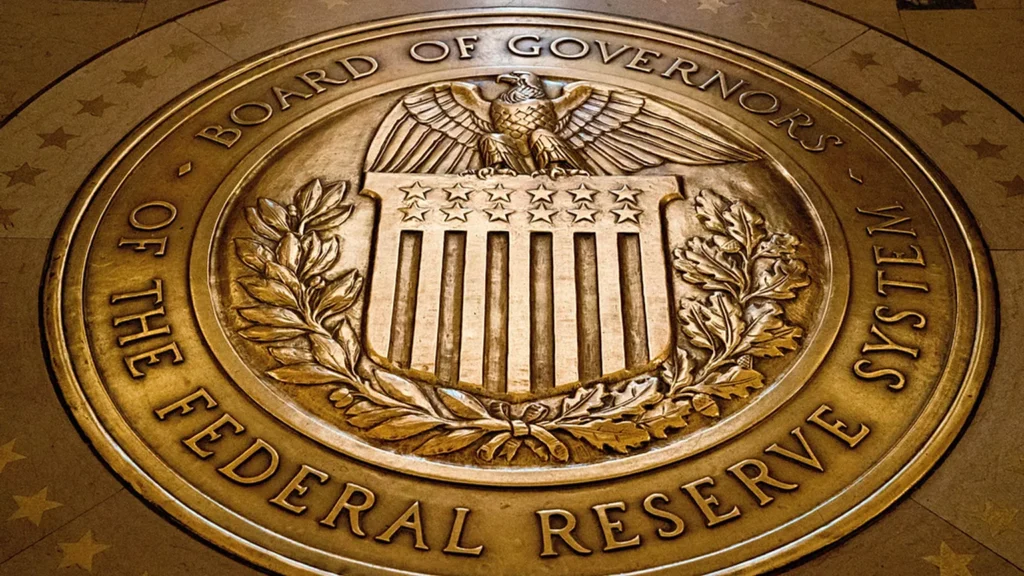
Tomorrow, September 17, the U.S. Federal Reserve under Jerome Powell is expected to make its long-anticipated move: a 25 basis point rate cut. The markets are almost entirely priced for it.
But while that cut will make headlines, lift spirits, and likely send certain asset classes surging in the short term (especially growth and tech stocks, as has been the case historically), it won’t alter the structural dynamics that really determine the long-run outcomes. Here’s why—and how investors might think beyond the moment.
What We Expect Tomorrow
- A 25 bps rate cut: Bringing the benchmark rate to around 4.00%–4.25%.
- Inflation: Still elevated, even if off its peak.
- Labor market: Slowing, with weakening demand for labor.
- Market pricing: Already reflecting the expected cut across equities, bonds, and commodities.
What This Means in the Short Run
- Growth & tech stocks may bounce: Lower discount rates boost future earnings valuations.
- Gold and hard assets might rally: Lower real rates reduce the opportunity cost of holding non-yielding assets.
- “Buy the rumor, sell the news”: With expectations already baked in, any upside may be short-lived.
- Short-term yields will dip: But long-term rates could rise if inflation expectations stay firm or the term premium increases.
Why It Won’t Matter in the Long Run
1. Real Interest Rates & Inflation Expectations Still Rule
Even with a nominal rate cut, if inflation remains sticky, real rates stay low or negative. That erodes your purchasing power and punishes fixed-income savers. It’s a quiet tax, one that pushes investors toward hard assets, precious metals, real estate, and commodities.
2. The Long-End Drives the Economy
The Fed sets the short rate. But the 10, 20, and 30-year bond yields? That’s the market talking. These reflect inflation expectations, fiscal credibility, and term premium. A Fed cut tomorrow won't anchor long-term rates if those fundamentals don’t align.
3. The Dollar Is Under Pressure
A weaker real yield in the U.S. compared to other economies can erode the dollar’s strength. That increases import costs and sends global capital searching for better stores of value. Gold, oil, and even foreign currencies are catching bids as the dollar wobbles.
4. Valuation Bubbles Don’t Last
The Fed’s easy money narrative has inflated valuations, particularly in tech and speculative growth. But every bubble pops. Rate cuts might kick the can down the road, but they don’t resolve the underlying fragility. If earnings disappoint or rates rise again, the reversal could be swift.
Rate Cuts as a Warning Sign, Not a Lifeline
History shows that Fed rate cuts often arrive not at the start of recovery, but at the onset of deeper trouble. Consider the pattern:
- In 2001, after the dot-com bubble peaked, the Fed slashed rates aggressively—yet markets continued to tumble for nearly two more years.
- In 2007–2008, the Fed began cutting rates well before Lehman Brothers collapsed. But those cuts didn’t prevent the worst financial crisis since the Great Depression.
- Even in real estate, lower rates haven’t always provided relief. During housing corrections, prices continued to slide despite cheaper financing because fundamentals—oversupply, tightening credit, and waning demand—overpowered monetary stimulus.
The lesson is simple: rate cuts are rarely a sign of strength. More often, they are an acknowledgment that weakness has already taken root. Investors who mistake cuts for safety nets often walk straight into the teeth of market downturns.
What You Should Do Instead
If you're serious about preserving and growing wealth, don’t anchor your strategy to Fed announcements. Consider this instead:
- Own assets that can’t be printed: Real estate, land, commodities, physical precious metals.
- Stay cautious with overvalued sectors: Especially those driven more by hype than earnings.
- Avoid fixed income unless yields truly compensate you: Negative real yields are still a loss (when factoring in inflation and currency devaluation).
- Extend your horizon: Wealth is built in years, not news cycles.
- Diversify beyond the dollar: Keep an eye on global shifts that may favor non-dollar assets or emerging markets.
The Bottom Line
Tomorrow’s rate cut will be newsworthy, but it won’t be transformational. Markets will react, analysts will spin narratives, and prices will move. But these are momentary ripples, not the tide.
The real drivers of your long-term wealth are still in play: inflation, real yields, currency strength, and the integrity of the assets you own.
If you're an investor, ask yourself: Are you chasing the next headline? Or are you building real value?
Because in a world where money is printed, but real assets are not, it's the latter that holds the keys to lasting financial resilience.




